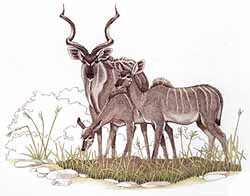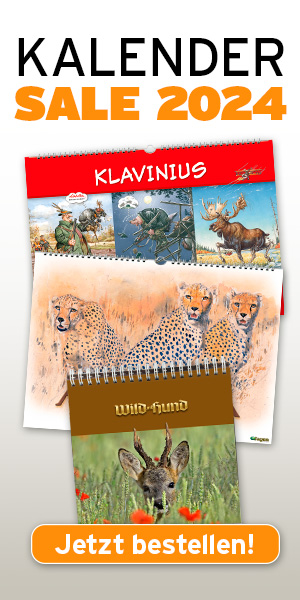English: Greater Kudu; French: Grand Koudou; Afrikaans: Koedoe; Amharic: Agazen; Bushman: N!hwa, xèi, xhi; Damara: Xaib; Herero: Ohorongo; Iswana: Iholo; Kiswahili: Tandala, Mkubwa; Kwanyama: Oholongo; Lozi: Tolo; Maasai: Emalo; Shangan: Xabalaha, nhongo; Shona: Nhoro; Sindebele: Bhalabhala; Somali: Godir; Xhosa: Igudu; Zulu: Umgankla, igogo.
 |
Former distribution: From Lake Chad east to northern Central Eastern Republic, southern Sudan, southern Ethiopia, south to Cape Province.
Present distribution: Eastern Chad, Ethiopia, northern Central African Republic, north-western Somalia, eastern and western Sudan, southern and north-western Kenya, Tanzania, north-eastern Uganda, Zambia, southern Malawi, Zimbabwe, Mozambique, southern Zaire, southern Angola, Namibia, Botswana, Republic of South Africa.
Behaviour: Preferred habitat: open savanna woodlands, also in semi-desert areas with sufficient scrub and rock cover. They are gregarious in herds of up to 12 animals; active at twilight. Predominantly browsers of leaves, shoots, seeds, fresh grass. Kudus are well known as excellent jumpers easily clearing 2 m high fences.
Population status: Stable again in most parts of their distribution, after a considerable decrease due to the „Kudu rabies“ recently in Namibia and heavy hunting in most Kudu regions. In former areas of their distribution they have become extinct as (locally) in eastern Chad, southern Sudan; in South Africa in parts of Natal and eastern parts of the Cape Province.
Brief notes:
Body weight: 250-325 kg
Head and body length:
2.25-2.45 m
Tail length: 0.35-0.55 m
Shoulder height:
1.30-1.50 m
Gestation period: 210 days
Maximum age: 7-8 years (23 years in captivity)
Trophy: Record RW’s: ROWLAND WARD, 1986, 69 1/4, length 11 circumference. 40 Tip to Tip, 1916 RSA, P.J. Rous Safari Club International, 1986. 150 4/8, 1983, IAN SWANNACK, Zimbabwe; average 54 inch (137.2 cm), 52 inch (132.1 cm).
Hunting methods: Stalking, from hides.
Subspecies: 3
1. Southern Greater Kudu Tragelaphus str. strepsiceros Namibia, Botswana, Zimbabwe, Zambia, southern Angola, south-eastern Zaire, southern Tanzania, southern Malawi, Republic of South Africa. Stable.
2. East African Greater KuduTragelaphus str. bea Southern and north-western Kenya, north-western Somalia, north-eastern Uganda, Tanzania. Stable.
3. Western Greater Kudu Tragelaphus str. cottoni Eastern Chad, northern Central African Republic, southern Sudan, Ethiopia. Stable.
Remarks: Although TH. HALTENORTH and H. DILLER, 1977, list 4 subspecies, as well as R.H.N. SMITHERS, 1983, the author follows the classification of J. DORST and P. DANDELOT, 1970, and ST. J. SMITH, 1985 recording 3. Tragelaphus str. chora is syn. with Tr.str. cottoni; and Tragelaphus str. frommi with Tr.str. bea. Information required about the correct distribution areas.







